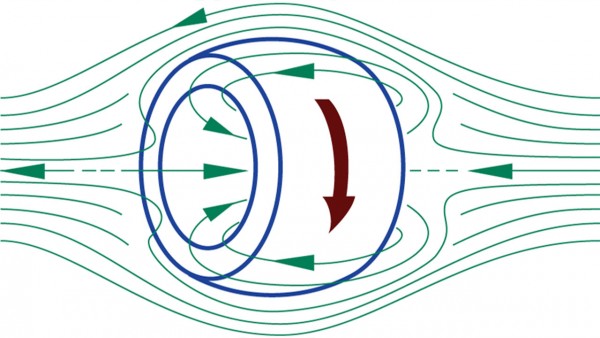科学杂志对美国Tri Alpha核聚变公司的报道
2015-08-13 20:51:53 来源:冷聚变世界翻译整理 评论:0 点击:

文章的原文标题为:Mystery company blazes a trail in fusion energy,中文翻译为:神秘公司为聚变能源开辟新的道路。
2015年8月13日
“They’ve improved things greatly and are moving in a direction that is quite promising,” says plasma physicist John Santarius of the Fusion Technology Institute at the University of Wisconsin, Madison.
Fusion energy seeks to replicate the power source of the sun and stars: heating atoms to enormous temperatures so that their nuclei slam together with enough force to overcome their mutual repulsion and fuse, releasing energy. The challenge on Earth is to confine plasma—an ionized gas, with electrons and nuclei separated—at high temperatures (greater than 150 million degrees Celsius) long enough for fusion reactions to occur. Most effort over the past 60 years of fusion research has focused on tokamaks—huge doughnut-shaped vessels that confine plasma with powerful magnets—and laser fusion, which uses high-energy laser pulses to squeeze tiny capsules of fuel. But between these low-density and high-density extremes there is a range of other approaches that have received little government funding. Now, startup companies are moving into that vacuum.
Tri Alpha’s device relies on a plasma phenomenon called a field-reversed configuration (FRC), akin to a smoke ring of plasma. Because plasma is made of charged particles (electrons and nuclei), the swirling particles in the FRC create a magnetic field that acts to hold the ring together, potentially long enough for fusion to get going. Tri Alpha’s 23-meter-long device has at its heart a long tube with numerous ring-shaped magnets and other devices along its length. It creates a plasma smoke ring close to each end and fires them toward the middle at 250 kilometers per second. At the center they merge, converting their kinetic energy into heat to produce a high-temperature FRC.
In earlier attempts to create long-lived FRCs, turbulence in the plasma caused heat to leak away as hot particles migrated to the edge and escaped, causing the smoke ring to shrink and fade away. And although FRCs proved more stable than other ways of confining plasma, the ring-shaped plasma did tend to tilt or lose shape, causing it hit the tube wall and disintegrate. As a result, researchers couldn’t push the lifetime of high-temperature FRCs beyond about 0.3 milliseconds. “They had trouble getting parameters to what was needed,” says Santarius, who in the past has worked with Tri Alpha researchers and received funding from the company.
Researchers had theorized that an FRC could be made to live longer by firing high-speed ions into the plasma. Michl Binderbauer, Tri Alpha’s chief technology officer, says that once the ions are inside the FRC, its magnetic field curves them into wide orbits that both stiffen the plasma against instability and suppress the turbulence that allows heat to escape. “Adding fast ions does good things for you,” says Glen Wurden of the Plasma Physics Group at Los Alamos National Laboratory in New Mexico. Tri Alpha collaborated with Russia’s Budker Institute of Nuclear Physics in Akademgorodok, which provided beam sources to test this approach. But they soon learned that “[ion] beams alone don’t do the trick. Conditions in the FRC need to be right,” Binderbauer says, or the beams can pass straight through. So Tri Alpha developed a technique called “edge biasing”: controlling the conditions around the FRC using electrodes at the very ends of the reactor tube.
In papers published last month in Physics of Plasmas and Nature Communications, the Tri Alpha team reveals how fast ions, edge biasing, and other improvements have enabled them to produce FRCs lasting 5 milliseconds, a more than 10-fold improvement in lifetime, and reduced heat loss. “They’re employing all known techniques on a big, good-quality plasma,” Wurden says. “It shows what you can do with several hundred million dollars.” Tri Alpha is supported by “a very diverse group of investors,” Binderbauer says, including venture capital companies, billionaire individuals, and the government-owned Russian Nanotechnology Corp.
To achieve fusion gain—more energy out than heating pumped in—researchers will have to make FRCs last for at least a second. Although that feat seems a long way off, Santarius says Tri Alpha has shown a way forward. “If they scale up size, energy confinement should go up,” he says. Tri Alpha researchers are already working with an upgraded device, which has differently oriented ion beams and more beam power.
评论排行
- ·黑光能源公司 BlackLight Power, In...(4294967281)
- ·冷聚变技术可以结束当前的雾霾天气吗?(13)
- ·布里渊能源技术公司的CECR技术简介(9)
- ·Defkalion公司的5千瓦Hyperion冷聚变反应堆(8)
- ·截止2014年国内外冷聚变研究现状(8)
- ·美军宣称已成功将海水直接转化为燃料(8)
- ·关于近期对E-CAT真实性质疑的问题(8)
- ·中核研究院成功复制镍氢冷核聚变装置E-CAT(7)
- ·美预言家预测人类在未来18个月内实现冷...(6)
- ·黑光能源公司宣布改变能源领域游戏规则...(6)
- ·镍氢电能(E-CAT)研究中心落户天津(6)
- ·工业热力公司公告称罗西起诉没有任何价值(6)
- ·空中客车公司对冷核聚变研发感兴趣(5)
- ·1升水能让汽车跑5000公里(4)
- ·冷聚变开拓者:马丁. 弗莱希曼 和 斯...(4)
- ·世界上第一台冷聚变装置E-CAT的研发历程(4)
- ·冷聚变是伪科学吗?(4)
- ·冷聚变将引发环保和新能源技术新的革命(4)
- ·德国EGM公司的水基燃料技术(4)
- ·英国国防部最新报告:冷聚变技术将来会...(4)
